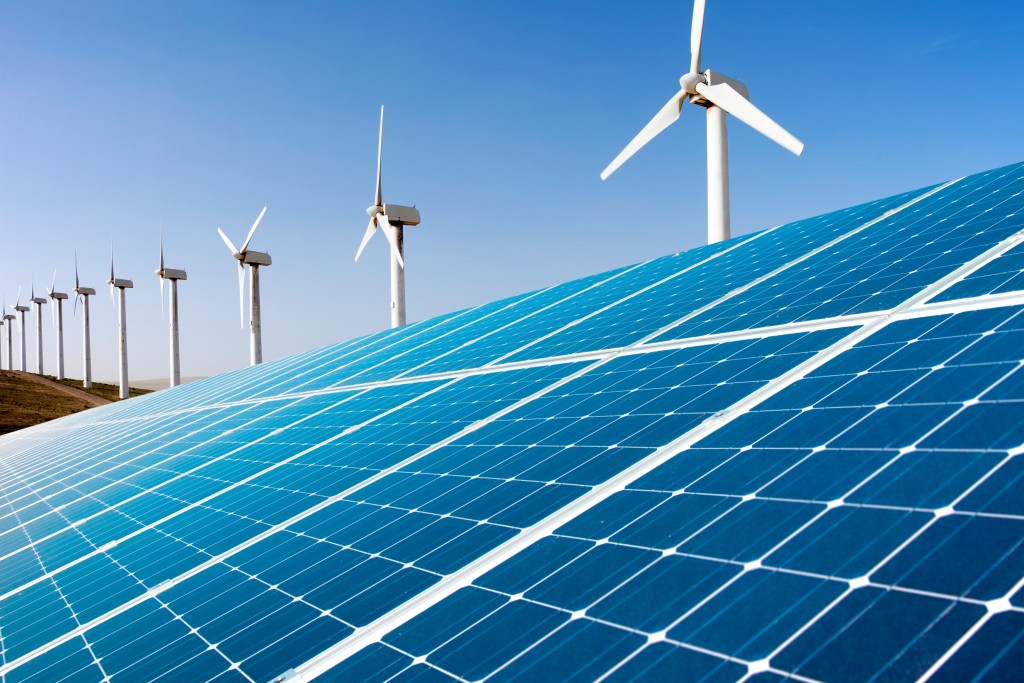Unlike traditional energy sources, such as coal and fossil fuels, renewable energy relies on the earth’s natural resources. Since these natural resources are not finite, the related costs of generating power are very low compared to traditional methods. The cost of generating energy from solar and wind energy per megawatt-hour is around $50 less than conventional methods. Hence, it is no surprise that many businesses in the utility industry turn towards renewable energy to get an edge over their competitors.
In April 2019, renewable energy (23%), for the first time, surpassed coal consumption (20%) to generate power in the USA. With such significant growth in renewable energy use, it is evident that you would be looking for different available resources to generate energy. Hence, we have enlisted a few readily available and efficient renewable energy in this post, along with the changing trends.
Different Renewable Sources Of Energy Available
Solar
Solar energy is derived from sunlight, and since it is inexhaustible, it is easy to generate energy from the sun. You would have seen residential solar panels on the roofs of houses or buildings. These panels can capture sunlight and transform it into electricity, hot water, or heat. The endless supply of solar energy has the potential to make the use of fossil fuels obsolete.
Solar energy has various benefits, such as reduced energy costs in the long-term and less greenhouse gas emissions, thereby helping to create a sustainable environment. But there are not all pluses. The only challenge with using solar energy is its high upfront cost. But, the costs will gradually decrease over the long run.
Wind
Windmills and turbines can harvest wind energy and convert it to electricity. Caused by temperature differences in different atmospheres, the wind too is inexhaustible. There are various systems available to capture wind, and each has its pros and cons. The wind is one of the purest sources of energy and does not have any impact on global warming.
It is capable of meeting the human electricity demands alone. But, there are two limitations associated with wind energy. The first is its high implementation costs, and the second is that wind energy farms are usually implemented in remote and rural areas, far from cities, where demand is the highest.
Water

Turbines implemented in dams can convert water’s force into hydroelectricity. Like solar and wind energy, hydroelectricity is an environment-friendly source of renewable energy. You can generate hydroelectricity through both large and small scale projects. But converting water force into electricity can consume an almost equal amount of energy. Hence, although it is a clean way of generating energy, it might not be best to meet electricity demand worldwide.
Trends that promise growth of the renewable energy sector
Unlike fossil fuels that can be burnt at any time, renewable energy sources are weather conditions specific. For instance, if the sky is cloudy, you will not get enough amount of sunlight. Hence, there was always a need to store renewable energy. But due to limited storage options, it was not possible to use renewable energy optimally. But, things are changing now.
Along with the upfront costs, costs for storing energy are also declining over the years. Also, businesses and governments worldwide are trying to find ways to keep renewable energy efficiently.
Awareness among end-consumers is also playing a vital role in helping the growth of the renewable energy market. People are now much more educated than before, especially in developing countries. They know how using fossil fuels is impacting global warming and our environment. Also, they know about the cost benefits associated with the use of renewable energy. Hence, businesses in the utility industry already see an upward demand for renewable energy-generated electricity.
Advancements in technology is another significant trend helping out by improving the efficiency of renewable energy. The simplest example can be the use of IoT (Internet of Things) devices for predictive maintenance. It is a known fact that older hardware components become less efficient in converting renewable energy to electricity. On the other hand, IoT devices are capable of capturing data in real-time and sharing it over the internet. When combined, IoT devices can track each hardware’s functioning. It can then notify administrators if there is any need to either repair or replace any hardware component.
These promising trends make it evident that renewable energy has the potential to revolutionize the utility industry. If you are running a business in this industry, it is now the time to switch to renewable energy and get an edge over the competitors.





